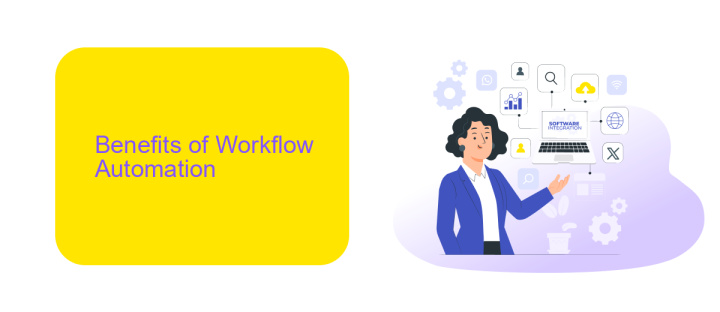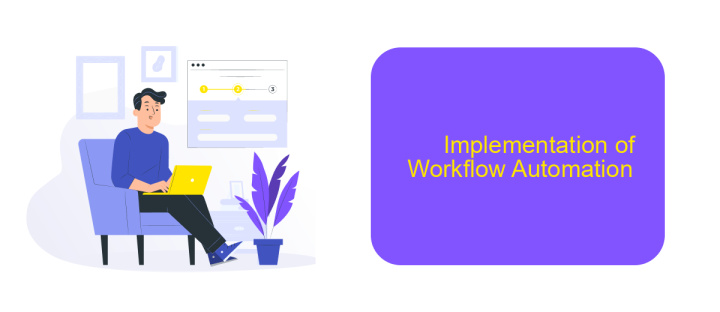Workflow Automation Synonym Automated Workflow
In today's fast-paced business environment, workflow automation, also known as automated workflow, has become a crucial tool for enhancing efficiency and productivity. By streamlining repetitive tasks and reducing human error, automated workflows enable organizations to focus on strategic initiatives, thereby driving growth and innovation. This article explores the key benefits and implementation strategies of workflow automation.
Introduction to Workflow Automation
Workflow automation is transforming the way businesses operate by streamlining repetitive tasks and processes. Through automation, companies can enhance efficiency, reduce errors, and free up valuable time for employees to focus on more strategic activities. This technological advancement is becoming essential in the modern workplace.
- Increased productivity through task automation
- Reduction of human errors
- Improved compliance and record-keeping
- Enhanced employee satisfaction by reducing mundane tasks
Integrating various tools and platforms is a crucial aspect of workflow automation. Services like ApiX-Drive facilitate seamless integration between different applications, enabling smooth data flow and communication. By leveraging such services, businesses can create a cohesive and efficient automated workflow, leading to significant operational improvements.
Benefits of Workflow Automation

Implementing workflow automation significantly enhances operational efficiency by reducing manual tasks and minimizing human errors. Automated workflows streamline processes, allowing employees to focus on higher-value activities rather than repetitive, time-consuming tasks. This not only boosts productivity but also ensures consistency and accuracy in task execution, leading to improved overall performance and quality of work.
Another key benefit of workflow automation is its ability to integrate various systems and applications seamlessly. Tools like ApiX-Drive facilitate these integrations, enabling different software to communicate and work together without manual intervention. This connectivity ensures data flows smoothly between platforms, providing real-time updates and insights that aid in better decision-making. By leveraging such integrations, businesses can create a more cohesive and efficient operational environment, ultimately driving growth and innovation.
Types of Workflow Automation

Workflow automation can significantly enhance productivity and efficiency in various business processes. There are several types of workflow automation that organizations can implement to streamline their operations.
- Task Automation: This involves automating repetitive tasks such as data entry, email responses, and report generation. Tools like ApiX-Drive can connect different applications, ensuring seamless data transfer and task execution.
- Process Automation: This type focuses on automating entire business processes, such as order processing or customer onboarding. By integrating multiple systems, ApiX-Drive helps create a cohesive workflow that reduces manual intervention.
- Approval Automation: Automating approval workflows ensures that documents and requests are reviewed and approved promptly. ApiX-Drive can route documents to the appropriate stakeholders, speeding up the approval process.
- Integration Automation: This involves connecting various software tools and applications to work together seamlessly. ApiX-Drive excels in this area, offering robust integration capabilities to synchronize data across platforms.
By leveraging these types of workflow automation, businesses can reduce errors, save time, and improve overall efficiency. Services like ApiX-Drive play a crucial role in facilitating these automations, making it easier for organizations to achieve their automation goals.
Implementation of Workflow Automation

Implementing workflow automation involves several critical steps to ensure seamless integration and efficiency. First, it is essential to identify repetitive tasks and processes that can be automated. This initial assessment helps in understanding the scope and potential impact of automation on the overall workflow.
Once the tasks are identified, selecting the right tools and platforms for automation is crucial. Platforms like ApiX-Drive provide robust solutions for integrating various services and applications, enabling smooth data flow and task automation. Proper configuration of these tools ensures that the automated workflow operates without interruptions.
- Identify repetitive tasks and processes
- Select appropriate automation tools and platforms
- Configure tools for seamless integration
- Test the automated workflow for efficiency
After setting up the automated workflow, it is important to continuously monitor and optimize the system. Regular reviews and updates help in maintaining the efficiency of the automated processes and adapting to any changes in the workflow requirements. By following these steps, organizations can achieve significant improvements in productivity and operational efficiency.
Conclusion
In conclusion, workflow automation, also known as automated workflow, significantly enhances operational efficiency by streamlining repetitive tasks and reducing human error. Businesses that adopt these technologies can expect improved productivity, better resource management, and a more agile response to changing market demands. The implementation of such systems not only saves time but also allows employees to focus on more strategic and creative tasks, thereby driving innovation and growth.
To maximize the benefits of workflow automation, it is crucial to integrate various tools and platforms seamlessly. Services like ApiX-Drive offer robust solutions for setting up these integrations, ensuring that all systems communicate effectively and data flows smoothly across different applications. By leveraging such services, businesses can achieve a higher level of automation and efficiency, ultimately leading to a competitive advantage in their respective industries.
FAQ
What is Workflow Automation?
How can Workflow Automation benefit my business?
What types of tasks can be automated in a workflow?
What tools can I use to implement Workflow Automation?
Is Workflow Automation suitable for small businesses?
Strive to take your business to the next level, achieve your goals faster and more efficiently? Apix-Drive is your reliable assistant for these tasks. An online service and application connector will help you automate key business processes and get rid of the routine. You and your employees will free up time for important core tasks. Try Apix-Drive features for free to see the effectiveness of the online connector for yourself.

